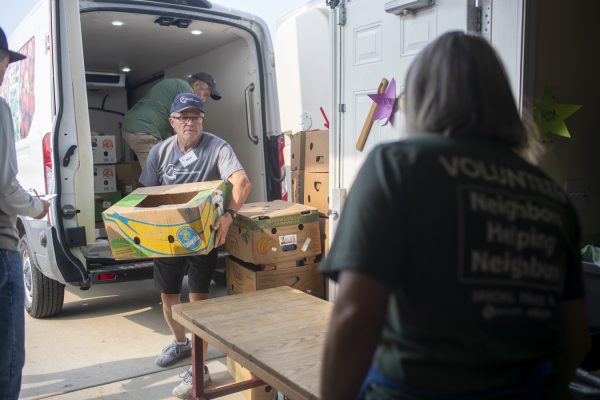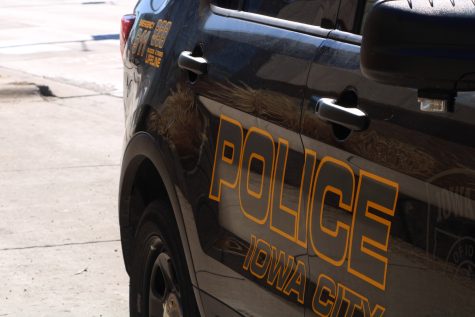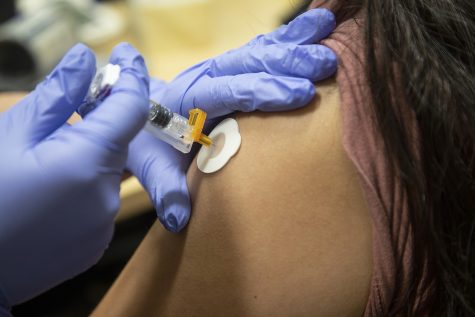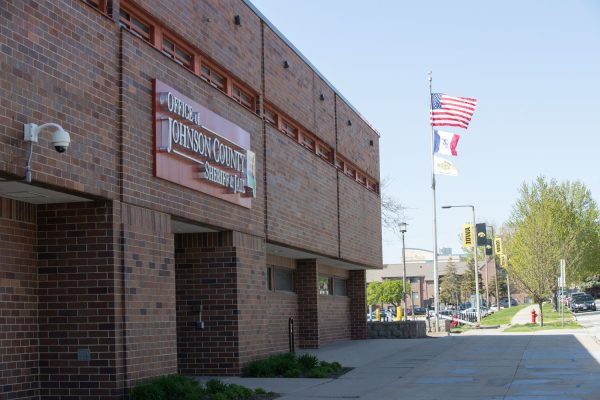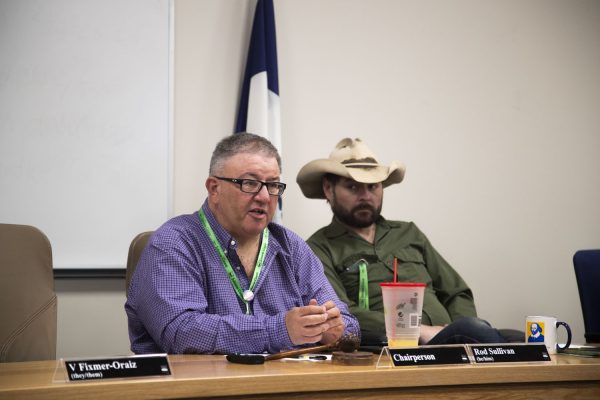Johnson County sees greenhouse gas emission decrease
A county staff presentation during the Johnson County Board of Supervisors work session Wednesday showed that gas emissions in Johnson County decreased by 28 percent from 2010 to 2020.
The Board is seen listening to a presentation during the Johnson County Board of Supervisors meeting in the Johnson County Administration Building on Wednesday, April 12, 2023.
April 19, 2023
Greenhouse gas emissions in Johnson County decreased by roughly 28 percent from 2010 to 2020, according to a presentation at the Wednesday work session meeting for the Johnson County Board of Supervisors.
The numbers came from a countywide inventory of greenhouse gas measuring emissions using 2010 as a baseline and measuring 2020 to create a comparison. This county wide inventory was the first time such an analysis had been done, with the county previously only measuring operational inventories.
The full report on the emissions states that operational inventories relate to the emissions of cities or county daily operations.
According to the presentation, the decrease in emissions is because of using more renewable energy sources like wind, while also having a decrease in the use of coal. The presentation also cites the increased use of energy efficient items, the addition of solar panels, and increased fuel efficiency as some of the other reasons.
RELATED: Iowa City sees successes in emissions reduction, electric vehicle use
The greenhouse gas inventory is typically used in residential, transportation, agricultural, among others, the presentation states.
Emissions decreased in all sectors in 2020 from 2010 except for solid waste. The solid waste sector is the name given to trash and recycling collecting, which Johnson County sustainability Coordinator Becky Soglin said was likely because of the increase in population.
Other findings from the presentation include that transportation was the sector with the most emissions, overtaking “commercial + industrial,” which in 2010 had the highest emissions.
The presentation concluded with the next steps for the county, which recommended actions in two stages. Stage one was composed of actions that could be taken now, including sharing the report with the public and other entities and setting county wide emission goals.
Stage two actions that could be taken in coming years, with suggestions to create and follow a plan for climate action, working with other groups and government entities, and to begin remeasure emission levels at regular intervals of every three years.
Related to this was another item in the meeting’s agenda, which was for Johnson County to consider participating in an EPA Climate Pollution Reduction Grant, which would provide up to $1 million in funding, according to the agenda packet.
“There will be potential to access up to $1 million in funding for this opportunity. There’s no match required from us, and there will be subsequent potential to apply for competitive grants,” Soglin said.
According to an attachment in the meeting agenda, participation would allow the county to work with other groups, including local governments and nonprofits, and help the county find ways to reduce greenhouse gasses.
To join, the county had to sign a letter of support from East Central Iowa Council of Governments, the group which will submit a notice of intent to participate in the EPA’s grant on behalf of Johnson County and other governments interested in joining.
The supervisors unanimously agreed to sign the letter, and without needing to complete this action during a formal meeting, the letter can be signed at the supervisors’ discretion ahead of the April 27 deadline.







